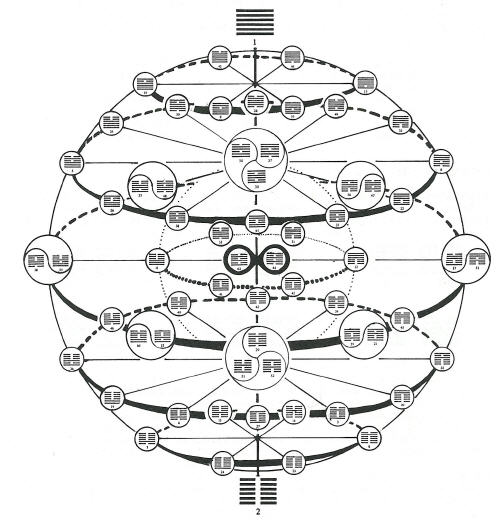I have started looking at the booklet that comes with the "Petit
Oracle des Dames" (which I will abbreviate as PODD). It on Gallica (
http://gallica.bnf.fr/ark:/12148/bpt6k6 ... lla.langEN), erroneously attributed to Etteilla.
Although most of the material in it, at least in the first 21 cards, comes from Etteilla, de Gebelin, and de Mellet, a few things do not. I've gone through the first 21 while having the three known sources in front of me, seeing what couldn't be attributed to them. I have found a few things. I will not only list them but give possible sources that I have thought of. Why this is interesting is that the parts that are unknown may be part of a tradition then known but now not, as the writer of the PODD is anything but original.
For card 1, the PODD writes, in part:
The goddess Isis, in the middle of a circle formed by a serpent that is biting its tail, represents the universe. The circle is the emblem of the annual revolutions, the image of eternity, which has neither start nor finish. Isis, which the Egyptians considered the origin of all, seems ready to run.
In contrast, all de Mellet says is that the card "represents the Universe by the Goddess Isis in an oval, or an egg." De Gebelin says that the card represents Time. "In the center is the Goddess of Time, with her veil that floats about & that serves as a belt or
Peplum[, as the Ancients called it. She is in the attitude of going around like Time, & in a circle that represents the revolutions of Time; thus the egg whence all is released into Time.[/quote]
Now the part of the PODD that talks about the serpent biting its tail might be from looking at it. But one would need to know something about its significance. In the 17th and 18th centuries, it was a common alchemical symbol. It meant something. For de Gebelin, it meant "the revolutions of time. But for PODD it is "the image of eternity", an explicit use of Plato's definition of time in the
Timaeus, time as "the moving image of eternity" (see
http://www.ellopos.net/elpenor/greek-te ... o-time.asp). The circle represents both Time and Eternity--a deeper interpretation than the other three give, that I can find. Where does this come from? I cannot imagine that the writer read Plato. I suspect some tradition pertaining to the Marseille Tarot.
Otherwise as I look through the first 21 PODD cards and the booklet's accounts, ignoring the suit card images for now, I see two new images, nor in our three sources: Fortune as a woman on a wheel with a small cupid-like figure grasping her clothing, and an allegorical figure sitting on a triangular block, called "Law and Faith." I recognize the first as related to an image of the 15th century "Mantegna school," showing a woman on a ball, being reached toward by a young man but restrained by another woman, standing on a cube. It was Occasion vs. Wisdom (for the image, see
viewtopic.php?f=12&t=630&start=10#p9428 and find "Wisdom"). illustrating the motto
Festina Lente, Hasten slowly. That image probably got slightly altered in some emblem book. The PODD calls it Occasion grasping at Chance ("Hazard"). Etteilla's figure of Temperance, one foot on a block and the other on a ball, is another use of the image, to convey "neither too much or too little". The other image probably comes from another emblem book, but if so I don't know it.
I know that there are Poilly influences in the PODD as well, but I am not convinced that they are in the first 21 images (excluding those associated with the suits). Both the image and the explanation of "Law and Faith" are different from "Faith" as a theological virtue. "Law and Faith" 's personification is sitting on something solid: she is the foundation of society, and of the "harmony of peoples" as the explanation says. And the two hands above her are not Law and Faith joined, but rather, the explanation says, a symbol of agreement and concord. I will be looking for other sources.
Only one other thing, in these 21 images, is not in de Gebelin, de Mellet, or Etteilla, that I can find. That is the idea of "protection" attached to Jupiter (keyword "Protecteur") and Juno ("Protectrice). Our author takes the titles Jupiter and Juno from de Mellet, and a positive appraisal of them from de Gebelin (borrowing mostly from his account of the Emperor and Empress, but a little from what he called the High Priest and High Priestess). But "protection" is not there, just "end of dissension". I assume it comes from a tradition about the Marseille cards. Etteilla omitted anything resembling either of these cards.
This will be continued.


